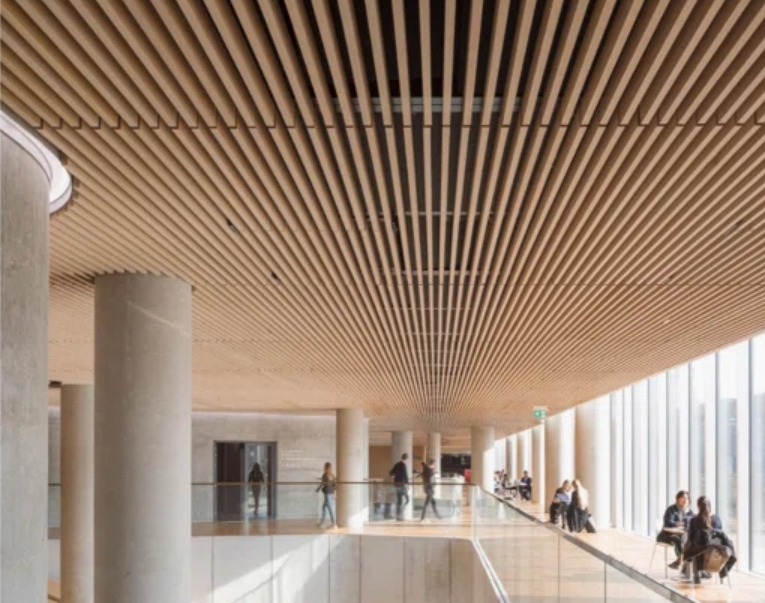Installing Metal Baffle Ceiling Panels: Tips and Best Practices
Author:Jayminton Time:2024-09-06
The installation of metal Baffle Ceiling panels requires careful planning and execution to achieve the desired aesthetic and functional results.
While the process is generally straightforward, there are several key considerations and best practices that can help ensure a successful installation.

One of the first steps in installing Metal baffle ceilings is to accurately measure the space and determine the layout of the panels. This involves deciding on the spacing, orientation, and pattern of the panels, as well as accounting for any building systems that need to be integrated, such as lighting, HVAC, or fire sprinklers.
A detailed installation plan helps to avoid mistakes and ensures that the final result matches the design intent.
Proper suspension systems are essential for the stability and alignment of metal baffle Ceiling Panels. The panels are typically suspended from the ceiling using a grid or track system that must be securely attached to the building’s structure.
It is important to use high-quality materials and follow the manufacturer’s guidelines for spacing and load-bearing capacity to ensure the ceiling is both safe and durable.
During installation, attention to detail is crucial. This includes ensuring that the panels are level, properly aligned, and securely fastened. Any gaps or misalignments can detract from the overall appearance and may require time-consuming adjustments.
Additionally, installers should be mindful of the panel finishes, taking care to avoid scratches or damage during handling and installation.
Another important consideration is the integration of other building systems. For example, if acoustic treatments or lighting elements are being incorporated into the ceiling design, these should be planned for and installed in conjunction with the baffle panels. This coordinated approach helps to achieve a cohesive and functional Ceiling system.
Finally, it is important to conduct a thorough inspection of the installation upon completion. This includes checking the alignment, stability, and overall appearance of the panels, as well as ensuring that all building systems are functioning as intended.
By following these best practices, installers can achieve a high-quality, professional result that enhances the aesthetics and functionality of the space.

 S1 Clip-in Metal ceiling System
S1 Clip-in Metal ceiling System JMT-L4.2 U-Baffle System
JMT-L4.2 U-Baffle System JMT Aluminum Wall Cladding
JMT Aluminum Wall Cladding Aluminum Honeycomb Panel
Aluminum Honeycomb Panel Air-Condenser Cover
Air-Condenser Cover Metal Heat Cover
Metal Heat Cover Singapore Changi Airport T2 Arrival
Singapore Changi Airport T2 Arrival Australia Marvrl Stadium City Edge
Australia Marvrl Stadium City Edge Enterprise Information Announcement
Enterprise Information Announcement Construction Industry Solutions
Construction Industry Solutions About Jayminton
About Jayminton Contact US
Contact US